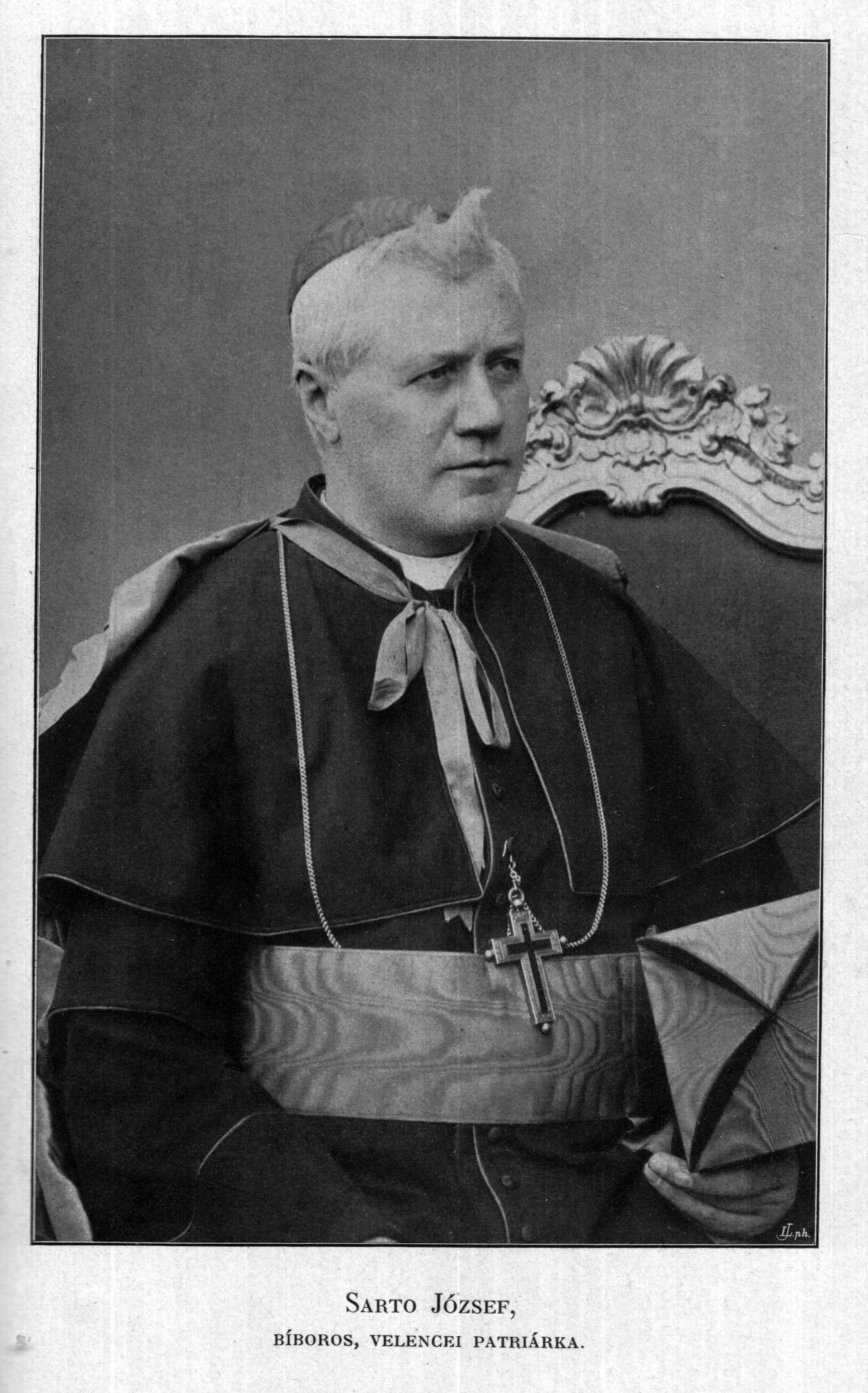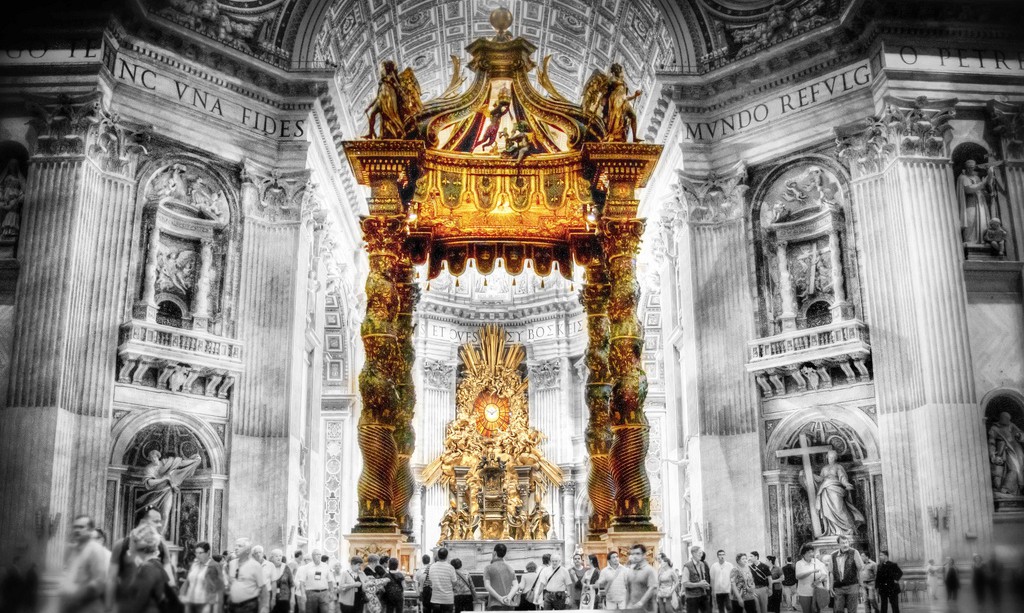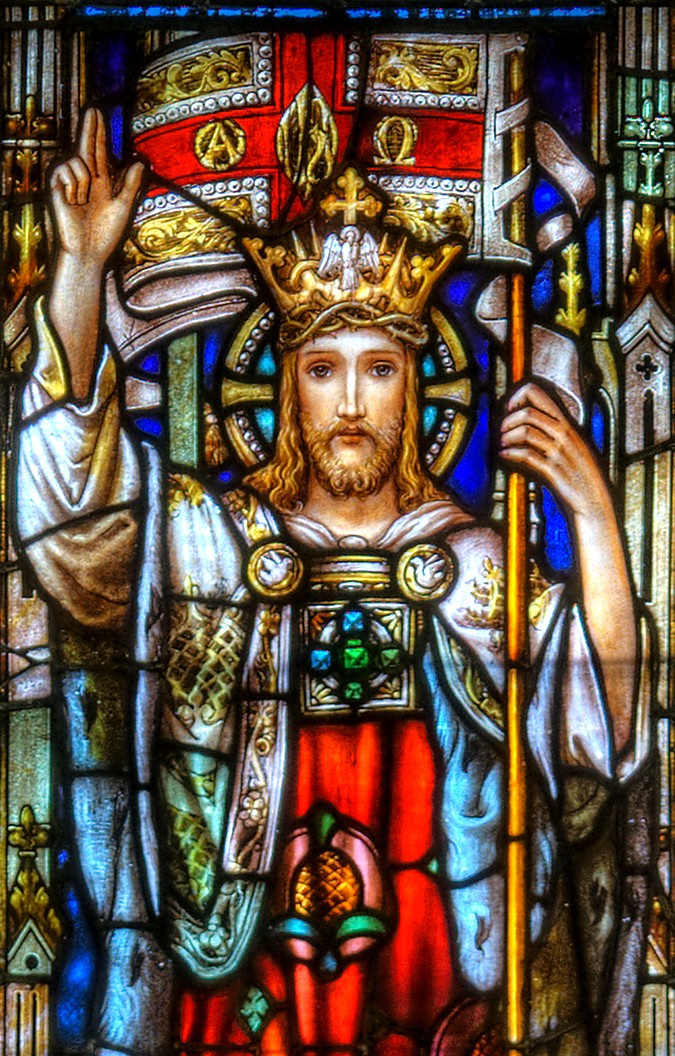Most don’t know the Italian noblewoman, Princess Elvina Pallavicini, accepted Archbishop Lefebvre into her palace for a conference, showing him and ultimately the Traditional Faith her support, when few in the Church would even stop to listen to anything Archbishop Lefebvre had to say about the Faith that sanctified the Church for 2,000 years. She was threatened with excommunication for even entertaining the Archbishop. However, fidelity is victorious in the end and the palace of the Princess became a focal points for many priests, bishops and cardinals. Indeed, the Princess was right: there is no room in the Church for the cowardly.
Read the story below.
An Example of Catholic Resistance: Princess Elvina Pallavicini
Roberto de Mattei
Corrispondenza Romana
July 12nd 2017
Palazzo Pallavicini-Rospigliosi as it appears today
Forty years ago a historical event took place: Archbishop Marcel Lefebvre held a conference on June 6th 1977 at the Pallavicini Palace in Rome, on the subject “The Church after the Council”. I think it is worthwhile to recall that event, on the basis of notes and documents I have kept.
Archbishop Marcel Lefebvre, founder of the Priestly Fraternity of St. Pius X (1970), after the priestly ordinations of June 29th 1976, was suspended a divinis on July 22nd of the same year. Informed Catholics however, had serious doubts as to the canonical legitimacy of these measures and in particular, incomprehension with regard to the behavior of Paul VI who seemed to reserve his censorships for only those who said they wanted to remain faithful to Church Tradition. In this climate of disorientation, in April of 1977, Princess Elvina Pallavicini (1914 -2004) decided to invite Archbishop Lefebvre to her palace in the Quirinal, to hear his reasoning.
Princess Pallavicini was 63 years old at the time and the widow of Prince Guglielmo Pallavicini who had been killed on his first war mission in 1940. For many years she had been in a wheelchair as a result of progressive paralysis, but she was a woman of indomitable spirit. She had a close group of friends and advisors around her, among whom were Marquis Roberto Malvezzi Campeggi (1907-1979), Colonel of the Papal Noble Guard at the time of the corps’ dissolution in 1970, and Marquis Luigi Coda Nunziante di San Ferdinando (1930-2015), former Commander of the Italian Navy. Initially, news of the conference circulating during the month of May did not stir up any concern from the Vatican. Paul VI thought it would have been easy to convince the Princess to desist from her idea and entrusted the task to one of his closest collaborators, “Don Sergio” Pignedoli (1910-1980) whom he had made a cardinal in 1973.
The Vatican Reacts
Princess Elvina Pallavicini in younger days, and visiting with the Archbishop
The prelate called the Princess and first of all asked kindly about her illness. “I am happy –Elvina Pallavicini noted ironically – about your interest [in my physical well-being] after such a long period of silence”. After about an hour of pleasantries the cardinal’s question at last arrived: “I heard you will be receiving Archbishop Lefebvre. Will it be a public or private conference?” ” If it is at my home it can only be private”, the princess replied. The cardinal then ventured: “Wouldn’t it be opportune to postpone it? Archbishop Lefebvre has made the Holy Father suffer quite a lot. He is very grieved about this initiative…” Princess Elvina’s reply chilled Cardinal Pignedoli “Your Eminence, I think I can receive anyone I like in my own home.”
Faced with this unexpected resistance, the Vatican turned to Prince Aspreno Colonna (1916-1987), who still occupied, ad personam, the office of Assistant to the Papal Throne. When the head of this historic household asked to be received, the Princess told him she was busy. Prince Colonna asked to visit the next day at the same time, but the noblewoman’s reply was the same. While the Prince withdrew quietly, the Secretary of State thought of getting through in another way. Archbishop Andrea Lanza Cordero di Montezemolo, who had just been consecrated Archbishop and named Nuncio to Papua-New Guinea, asked for an audience with the Princess. The prelate was the son of Colonel Giuseppe Cordero Lanza di Montezemolo (1901-1944), head of the Monarchic Resistance in Rome and shot by the Germans at the Fosse Ardeatine. During the German occupation, the young Princess Elvina had collaborated with him, meriting a bronze medal of honor. I also took part in the meeting, but my presence really irritated the future cardinal, who, in vain, appealed to the memory of his father to avert the upcoming conference. The Nuncio was told that it was the same resistance of many soldiers to National Socialism, and how it was necessary at times, to disobey unjust orders from superiors in order to respect the dictates of one’s conscience.
At this point the Secretary of State played his last card, by turning to the King of Italy, Umberto II, in exile in Cascais. Marquis Falcone Lucifero, Minister of the Royal Household, telephoned the Princess to let her know that the Sovereign had strongly urged her to postpone the conference. “I’m astonished at how His Majesty allows himself to be intimidated by the Secretary of State, after everything the Vatican did to the monarchy”, she replied decisively, confirming that the conference would be duly held on the date established. Marquis Lucifero, being the elderly gentleman he was, sent the Princess a bouquet of roses.
At this point the Vatican decided to use tougher tactics. A real campaign of psychological terrorism then began in the major daily newspapers presenting the Princess as an obstinate aristocrat, surrounded by a handful of “nostalgics” in a world destined to disappear. In private, it was made known to Donna Elvina that, if the conference was to take place, she would be excommunicated.
The Princess “Goes Public”
On May 30th, with a press release to Ansa, the Princess specified that her “initiative was not motivated by any intention of challenging ecclesiastic authority, but rather by love and fidelity to Holy Mother Church and the Magisterium.” “The contrasts in the conciliar Church,” continued the communiqué, “unfortunately exist, apart from the person of Archbishop Lefebvre, and in Italy to no lesser degree, even if less evident than in the rest of the Catholic world. We intend with the conference on June 6th to offer Archbishop Lefebvre the possibility of voicing directly his theses in full freedom, precisely with the aim of clarifying the problems which disturb and grieve the Catholic world so much, in the certainty that peace and serenity can be brought back again through a restored unity to the truth.”
On May 31st, on the front page of the daily newspaper “Il Tempo”, a declaration from Prince Aspreno Colonna appeared where we read “The Roman Patriciate dissociates itself from the initiative”, deploring it as “completely inopportune”. The bombshell was dropped however, on June 5th by the Cardinal Vicar of Rome, Ugo Poletti (1914-1997). With an aggressive statement in the Italian Bishops’ daily newspaper Avvenire, Poletti attacked Archbishop Lefebvre and ” his aberrant followers”, defining them as “a handful of class nostalgics, prisoners of traditional habits”. He further expressed, “astonishment, pain and sorrow, but the firmest disapproval for the offence made against the Faith, the Catholic Church and Her Divine Head, Jesus”, Archbishop Lefebvre having placed in doubt “fundamental truths of the kind relating to the infallibility of the Catholic Church founded on Peter and his successors, in matters of doctrine and morals”.
From the Princess’ headquarters there came an immediate reply: “It is difficult to understand how the private expression of theses which have been those of all the bishops of the world until a few years ago, can disturb the security of an authority to such an extent, as it has on its side the strength of doctrinal continuity and the evidence of its positions.” The Princess declared: “I am a more than convinced Apostolic Roman Catholic, seeing that I have reached the true sense of Religion through the refining of physical and moral suffering: I owe nothing to anyone, I have no honours nor prebends to defend, and I thank God for everything. Within the limits that the Church allows, I may dissent, I may talk, I may act: I have to talk and I have to act: it would be cowardice not to. And allow me say, that in our Home, also in this generation, there is no room for the cowardly.”
The Day of the Conference
Inside the Palazzo, similar to how it may have looked the day of the conference
Finally the fateful day of June 6th arrived. The conference was carefully reserved for four hundred invited guests, controlled by “private security” provided by the “Alleanza Cattolica” youth, but there were more than a thousand who filled up the staircases and the garden of the historical Rospigliosi-Pallavicini Palace, famous all over the world for its works of art. Archbishop Lefebvre arrived accompanied by his young representative in Rome, Don Emanuele du Chalard. Princess Pallavicini went to meet him in her wheelchair, pushed by her Lady-in Waiting, Donna Elika Del Drago. Princess Virginia Ruspoli, widow of Marescotti, one of the two hero-princes at the Battle of El Alamein, gave Archbishop Lefebvre a relic of St. Pius X which had been given to her personally by Pius XII.
Despite [the fact] that the Grand Priory of the Order of Malta in Rome had expressed “a binding necessity” to abstain from intervening at the conference, Prince Sforza Ruspoli, Count Fabrizio Sarazani and some other courageous aristocrats defied the censures of the institution and were there in the front row, right beside Monsignor François Ducaud Bourget (1897-1984), who had led the occupation of the Church Saint-Nicolas du Chardonnet in Paris on February 27th.
Princess Pallavicini introduced Archbishop Lefebvre and he took his place under the red baldachin with the coat of Arms of Pope Clement IX, Rospigliosi. The Archbishop after some moments of prayer, began with these words: “I respect the Holy See. I respect Rome. If I am here it is because I love this Catholic Rome.” The Catholic Rome that he had before him interrupted his speech repeatedly with thunderous applause. The hall was filled to overflowing and a crowd had gathered on the great staircases of the palace.
The “Council of aggiornamento” – explained Archbishop Lefebvre – in reality wants a new definition of the Church. To be “open” and be in communion with all religions, all ideologies, all cultures, the Church should change its excessively hierarchal institutions and break up into many National Episcopal Conferences. The sacraments will insist on initiation and the collective life, more than the driving out of Satan and sin. The leit-motiv of change will be ecumenism. The practice of the missionary spirit will disappear. The principle that “every man is Christian and doesn’t know it” will be proclaimed, so it doesn’t matter whatever confession is practiced – it is seeking salvation.
The liturgical and ecumenical changes – continued Archbishop Lefebvre in the hushed silence of all those present – cause the disappearance of religious vocations and make for deserted seminaries. The principle of “religious liberty” sounds outrageous to the Church and Our Lord Jesus Christ, as it is nothing other than “the right to public confession of a false religion with no interference from any human authority”.
Archbishop Lefebvre then lingered for a bit on the post-council’s caving-in to Communism, referring to the repeated audiences given to Communist leaders by the Holy See; the agreement not to condemn Communism during the Council; the contemptuous treatment reserved for more than 450 bishops who asked for this condemnation. On the contrary, dialogue with Communism was encouraged by nominating pro-Communist bishops like Monsignor Helder Camara in Brazil, Monsignor Silva Henriques in Chile, and Monsignor Mendez Arceo in Messico.
It is a fact, added Archbishop Lefebvre in conclusion, that numerous Dominicans and many Jesuits who profess heresies openly are not condemned and bishops who practice inter-communion, who introduce false religions in their dioceses and churches, who even end up blessing concubinage, are not even placed under inquiry. Only faithful Catholics risk being thrown out of churches, persecuted, condemned. “I have been suspended a divinis because I continue to form priests as they were once formed.”
Turning to a listener touched by his words, Archbishop Lefebvre concluded his conference saying: “Today the most serious obligation for a Catholic is that of conserving the Faith. It is not licit to obey those who are working to diminish Her or make Her disappear. With Baptism we asked the Church for the Faith because the Faith conducts us to eternal life. We will continue to our very last breath to ask the Church for this Faith.”
The meeting ended with the singing of the Salve Regina.
The Vatican reporter, Benny Lai in La Nazione of June 7th, commented: “Those who expected a tribune found themselves in front of a man of meek bearing, who, before inviting those present to recite the Salve Regina, concluded [his speech], with these worlds: “I don’t want to form a group of any kind, I don’t want to disobey the Pope, but he must not ask me to become Protestant.”
The conference was a strategic victory for those who were inappropriately called traditionalists, as Archbishop Lefebvre managed to make his theses known on the international level, without [suffering] canonical consequences.
Paul VI died a year later, devastated by the death of his friend Aldo Moro.
The name of Cardinal Poletti is still linked to the murky business of the nulla osta he granted on March 10th 1990, for the entombment of the Banda della Magliana Boss “Renatino” De Pedis, in the Basilica of Sant’Apollinare.
Princess Pallavicini came out a winner from this “challenge”. Not only was she not excommunicated, but in the following years her palace became the point of reference for many cardinals, bishops and Catholic intellectuals. She and her Roman friends were not “phantoms from the past”, as the Corriere della Sera defined them on June 7th 1977, but witnesses to the Catholic Faith who were preparing the future. Forty years later, history has proven them right.
Source: Roberto de Mattei
Translation: contributor Francesca Romana on Rorate Caeli




































